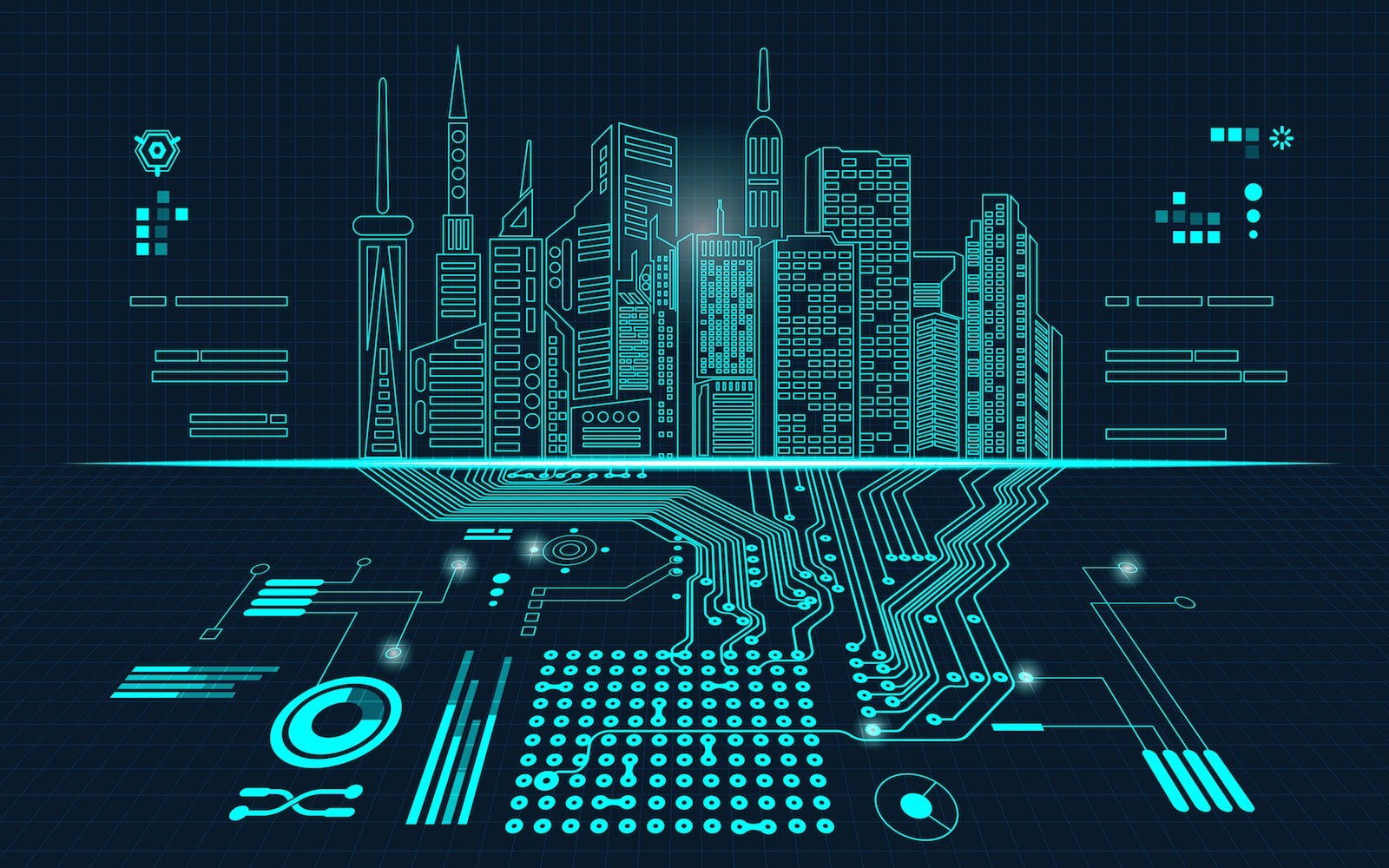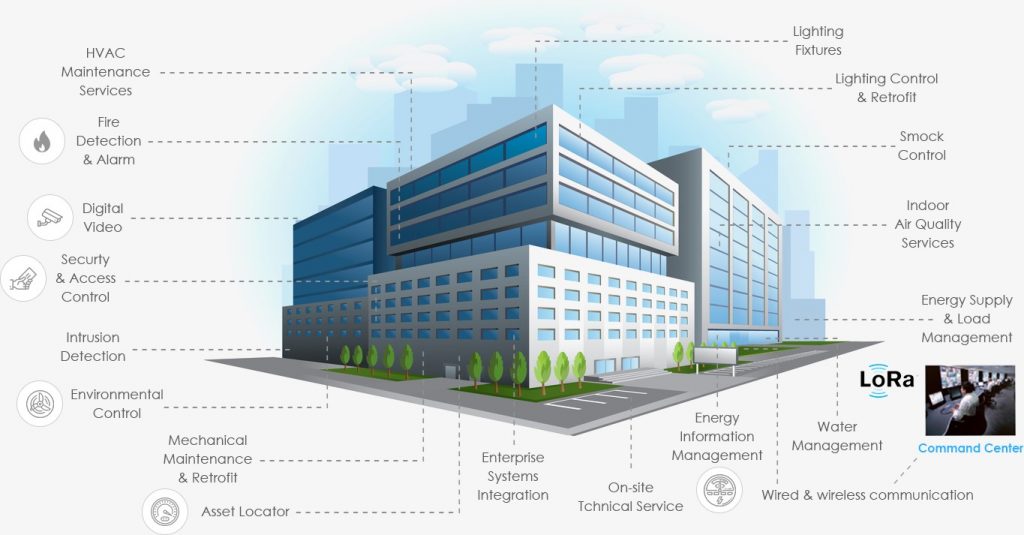Smart buildings use Internet of Things (IoT) devices—sensors, software, online connectivity—to monitor various building characteristics, analyze the data, and generate insights around usage patterns and trends that can be used to optimize the building’s environment and operations. While smart technology gives you greater control over your building, smart building technology is much more than just advanced “command and control” mechanisms (like your building management system, or BMS).
Smart building technology has a variety of applications within a building, depending on your goals. No matter which one of the objectives below you’re striving for, the overall premise is the same: your smart building system will monitor the relevant area of operation, collect data, analyze it, and provide actionable insights you can use to improve.
- If you’re striving to meet sustainability requirements, IoT platforms can be used to monitor your current energy consumption patterns, and analyze the data to produce targeted recommendations for reducing your energy use. The same can be done to achieve water-use reduction goals and improve indoor air quality
- If you want to reduce your energy bills, sensors that monitor your facility 24/7 can give you insight into how and when your facility uses energy. You can use smart building data to increase efficiency, strategically reduce your overall consumption for optimal building operations and even equipment usage.
- If you want to ensure continuous functioning of your critical equipment, you can use sensors to measure various aspects of their operation—humidity level, compressor vibrations, the temperature of the refrigerant coming in and out of evaporators and condensers, the temperature inside a refrigeration unit, etc.—to detect imminent failure. When incoming data shows that one aspect of operation has deviated from the norm, it’s a good indication that something is about to fail. Often, a breakdown can be prevented before it even occurs.
If you want to ensure healthy indoor air and minimize the risk of disease transmission (a common goal in the midst of the current pandemic), you can deploy low-cost sensors everywhere in your building to monitor particulate levels and ensure optimal functioning of HVAC equipment.


